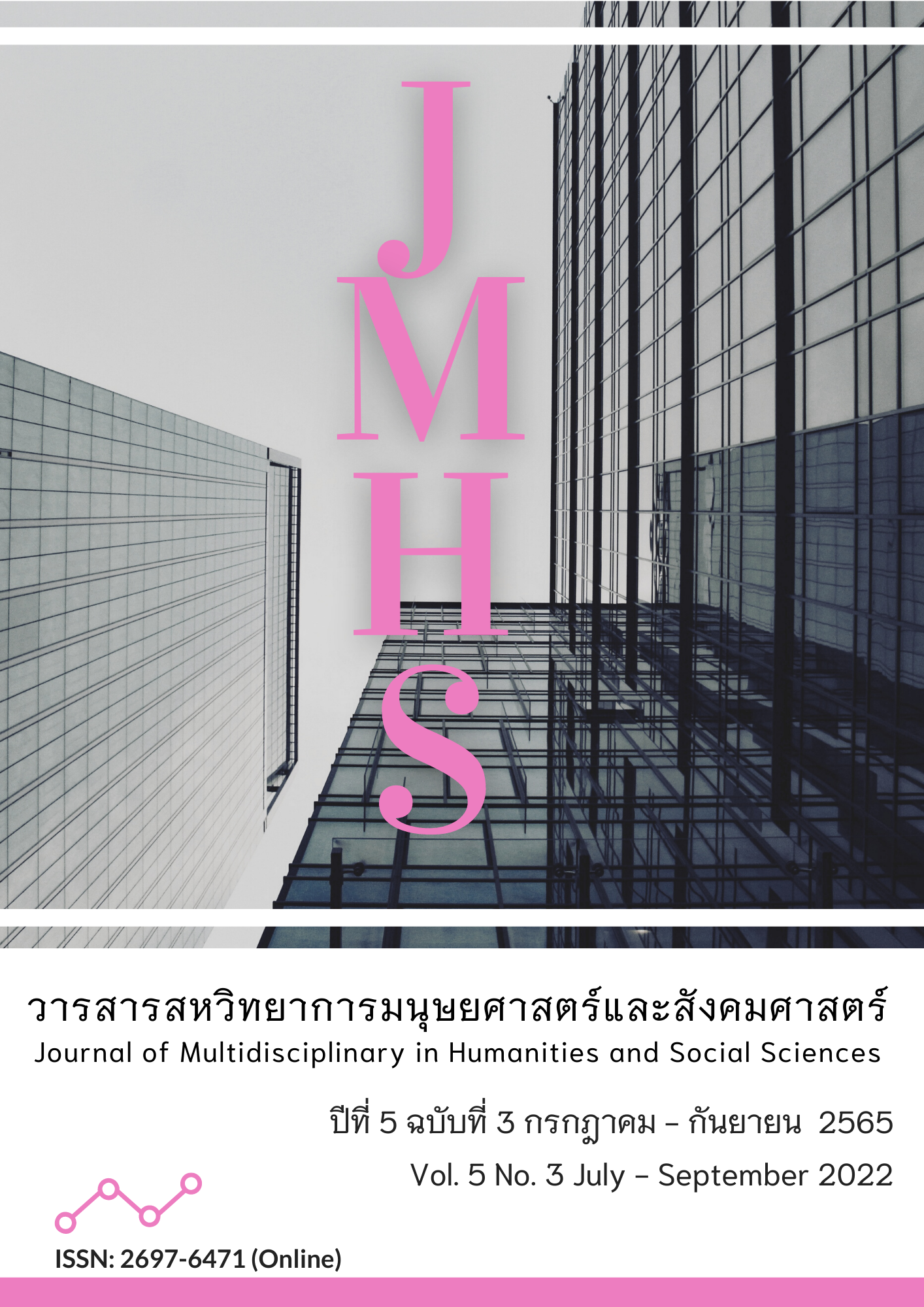Enhancing Self-Error Correction in English Writing of Thai Undergraduate Students through Online Concordances and Correction Symbols
Main Article Content
Abstract
The objectives of this research were 1) to develop students’ self-error correction in English writing by using online concordances and correction symbols; 2) to investigate the grammatical errors that were corrected after using the online concordances and correction symbols; and 3) to explore the students’ satisfactions towards using the online concordances and correction symbols in self-directed learning. The research design was one group pretest and posttest. The sample group was 35 second-year students majoring in English for Communication, Faculty of Liberal Arts at Rajamangala University of Technology Thanyaburi. All the 35 students were studying the course of English Structure for Writing Development. Convenient sampling was employed in this research. Also, the students were divided into three groups of English language competency including above average, average and below average. The students were assigned to write three types of writing: narrative, descriptive and comparison-contrast. There were three raters checking through holistic assessment and grammatical errors were categorized at word level. The research instruments were an online concordance of Lextutor, correction symbols, pretest and posttest, grammatical error-correction tasks, questionnaire (5-point rating scale) and in-depth interview. The statistics used in this research were percentage, mean, standard deviation, and the correlation coefficients among three raters. The results revealed that in three types of writing the correlation coefficients among three raters are high with statistical significance at the level of .05. The average of posttest scores was significantly higher than pretest scores at the level of .05. The students’ attitude for self-directed learning through using an online concordance line in English writing was at a high level. The posttest score was higher than the pretest score at .05 statistical significance level and perceived the corpus approach as beneficial to the development of their English writing skills.
Article Details

This work is licensed under a Creative Commons Attribution-NonCommercial-NoDerivatives 4.0 International License.
Views and opinions appearing in the Journal it is the responsibility of the author of the article, and does not constitute the view and responsibility of the editorial team.
References
Chandler, J. (2003). The Efficacy of Various Kinds of Error Feedback for Improvement in the Accuracy and Fluency of L2 Student Writing. Journal of Second Language Writing, 12(3), 267-296.
Chen, Y.H. (2004). The Use of Corpora in the Vocabulary Classroom. The Internet TESL Journal, (9). Retrieved from http://iteslj.org/Techniques/Chen-Corpora.html
Cheng, W., Warren, M., & Xun-Feng, X. (2003). The Language Learner as Language Researcher: Putting Corpus Linguistics on the Timetable. System, 31(2), 173-186.
Feng, H. H. (2014). The Use of Corpus Concordancing for Second Language Learners’ Self Error-Correction. Journal of Interactive Learning Research, 25(1), 5-25.
Ferdouse, F. (2012). Learning from Mistakes: Using Correction Code to Improve Student s Writing Skill in English Composition Class. Stamford Journal of English, 7, 62-86.
Gaskell, D., & Cobb, T. (2004). Can Learners Use Concordance Feedback for Writing Errors?. System, 32(3), 301-319.
Hedge. T. (2000). Teaching and Learning in the Language Classroom. Oxford University Press.
Holec, H. (1981). Autonomy and Foreign Language Learning. Oxford: Pergamon Press.
Hyland, K. (2003). Second Language Writing. Ed. J. C Richards. Cambridge: Cambridge University Press.
Lee, I. (2004). Error Correction in L2 Secondary Writing Classrooms: The Case of Hong Kong. Journal of Second Language Writing, 13(4), 285-312.
Maneekhao, K. (2001). Concordances and Dictionaries. In Proceedings of the Seminar King Mongkut’s University of Technology Thonburi. May, 2-4.
Mull, J. (2013). Learner as Researcher: Student Concordancing and Error Correction. Studies in Self-Access Learning Journal, 4(1), 43–55. Retrieved from http://sisaljournal.org/archives/mar13/mull
Onodera, N. (2007). The Efficacy of the Feedback Process on Errors in Student Writing. (Master’s Thesis). Srinakharinwirot University.
O’Sullivan, I., & Chambers, A. (2006). Learners’ Writing Skills in French: Corpus Consultation and Learner Evaluation. Journal of Second Language Writing, 15(1), 49-68.
Parise, P. (2013). The Use of Concordances in EFL/ESL Writing Instruction. Bulletin of Kanagawa Prefectural Institute of Language and Culture Studies, 3, 71-82. Retrieved from http://s3.amazonaws.com/academia.edu.documents/33406081/705293.pdf?AWSAccessKeyId=AKIAIWOWYYGZ2Y53UL3A&Expires=1491509395&Signature=KwAUtBhh0RXvEQLk%2BqLtQRSG7zs%3D&response-content-disposition=inline%3B%20filename%3D The_Use_of_Concordances_in_EFL_ESL_Writi.pdf
Prince. J.M., & Felder. M.R. (2006). Inductive Teaching and Learning Method: Definitions, Comparisons, and Research Bases. J. Engr. Education, 95(2), 123-138.
Shih, J.Y. (2008). Effects of Inductive and Deductive Approaches in Grammar Instruction for Junior High School Students of Differing English Proficiency. (Master’s Thesis). National Pingtung Institute of Commerce.
Sripicharn, P. (2003). Evaluating Classroom Concordancing: The Use of Concordance-based Materials by a Group of Thai Students. Thammasat Review, 8(1), 203-236.
Sun, Y.C. (2000). Using On-line Corpus to Facilitate Language Learning. Presented at Teachers of English to Speakers of Other Languages Annual Meeting 2000. Retrieved from https://www.learntechlib.org/p/88735/.
Tasanameelarp, A. (2010). Effects of Using Concordances on EFL Learners’ Ability to Self-correct Grammatical Errors. (Master’s Thesis). Prince of Songkla University.
Todd, R.W. (2001). Induction from Self-selected Concordances and Self-directed learning. System, 29(1), 91–102.
Tribble, C., & Jones, G. (1990). Concordances in the Classroom: A Resource Book for Teachers. Harlow: Longman.
Varley, S. (2009). I’ll Just Look that up in the Concordancerr: Integrating Corpus Consultation into the Language Learning Environment. Computer Assisted Language Learning, 22(2), 133-152.
Yoon, H., & Hirvela, A. (2004). ESL Student Attitudes Towards Corpus Use in L2 Writing. Journal of Second Language Writing, 13, 257-283.


